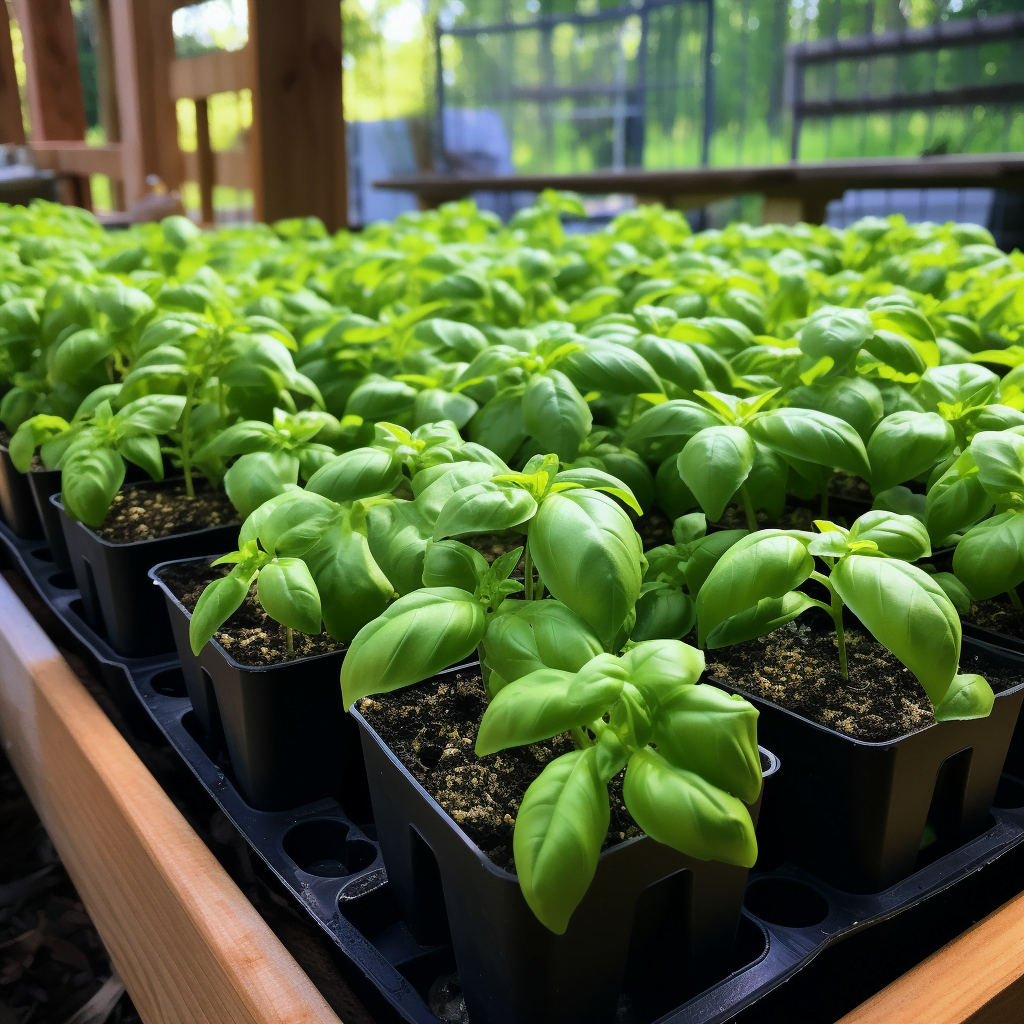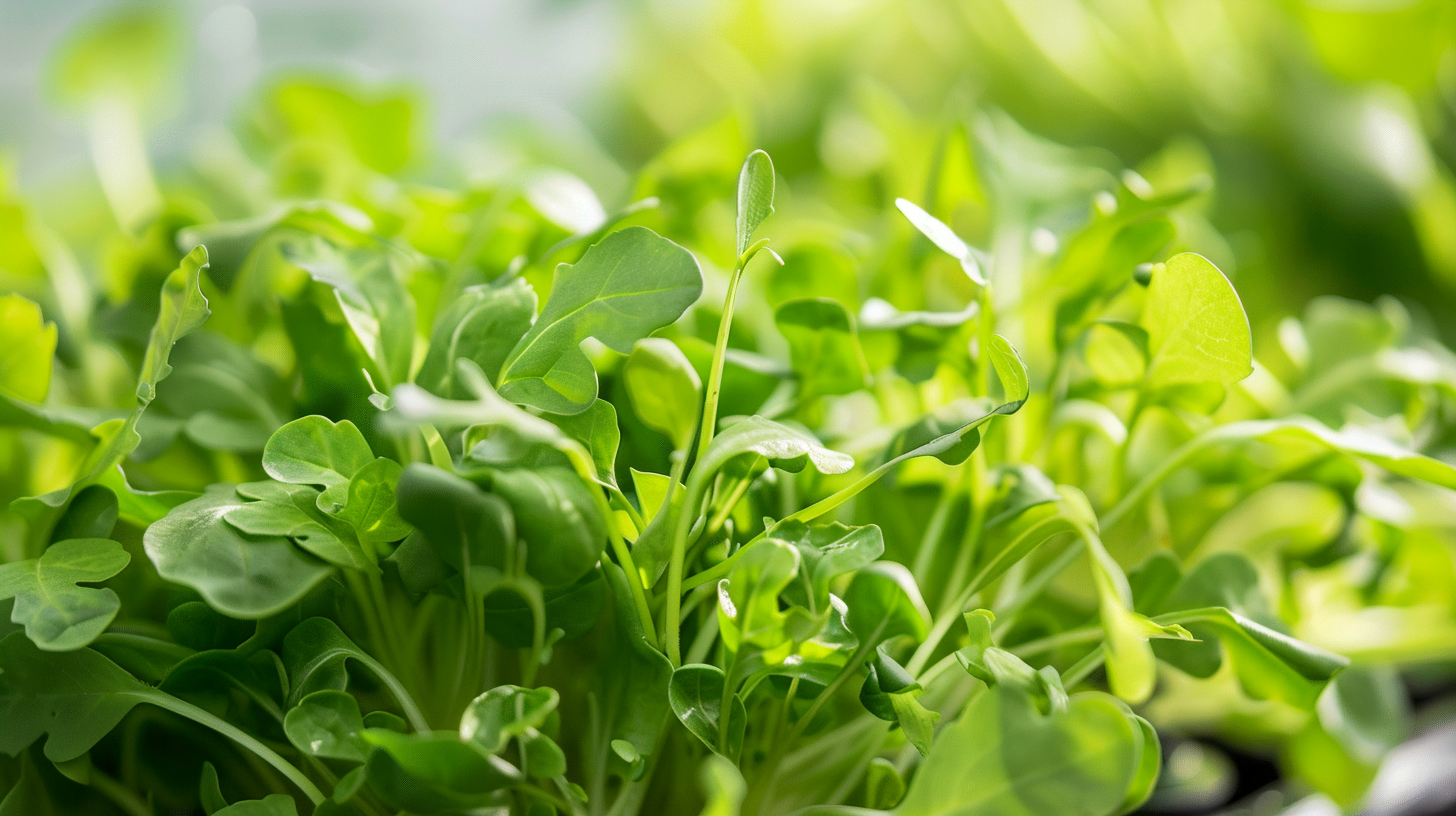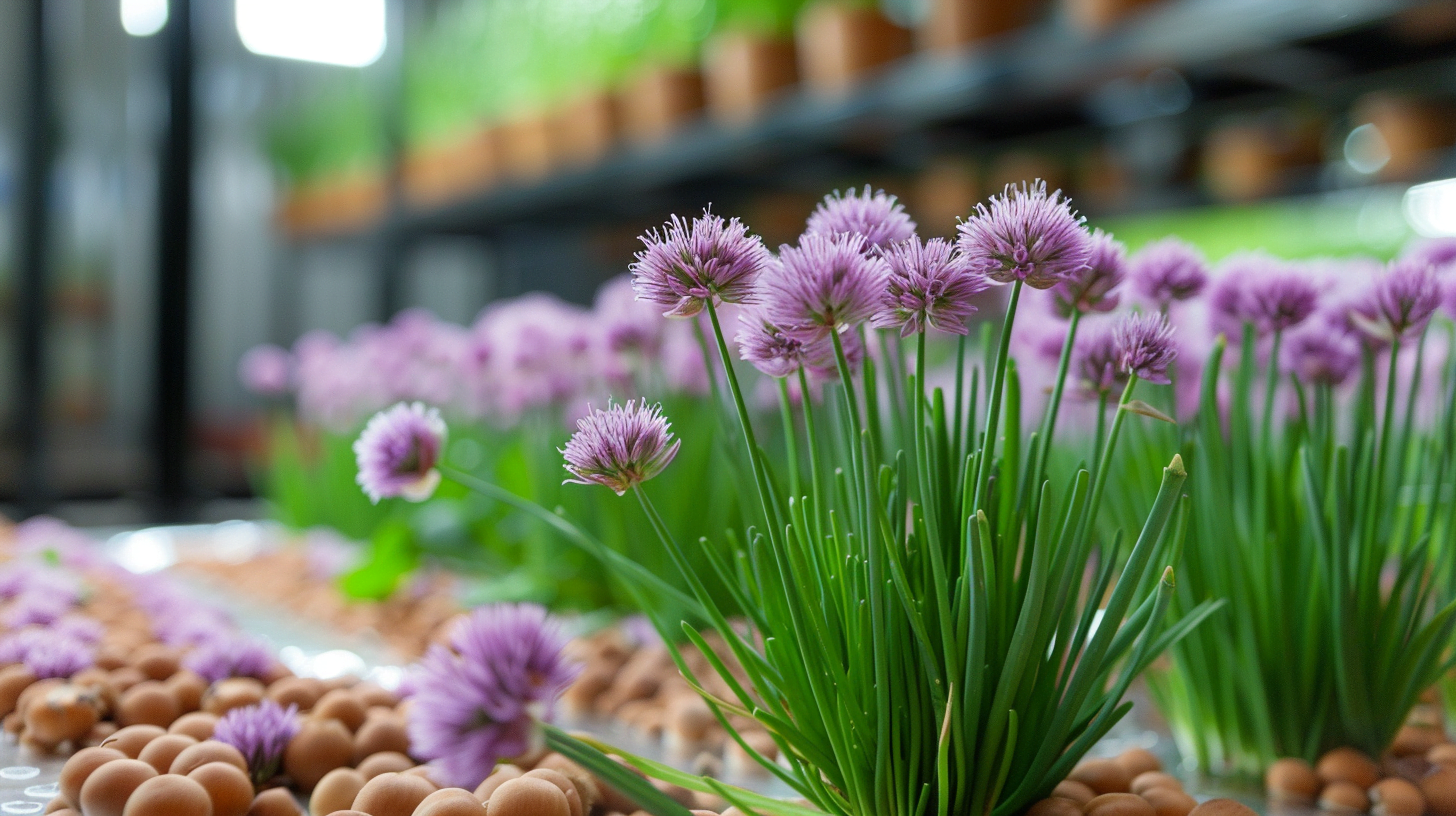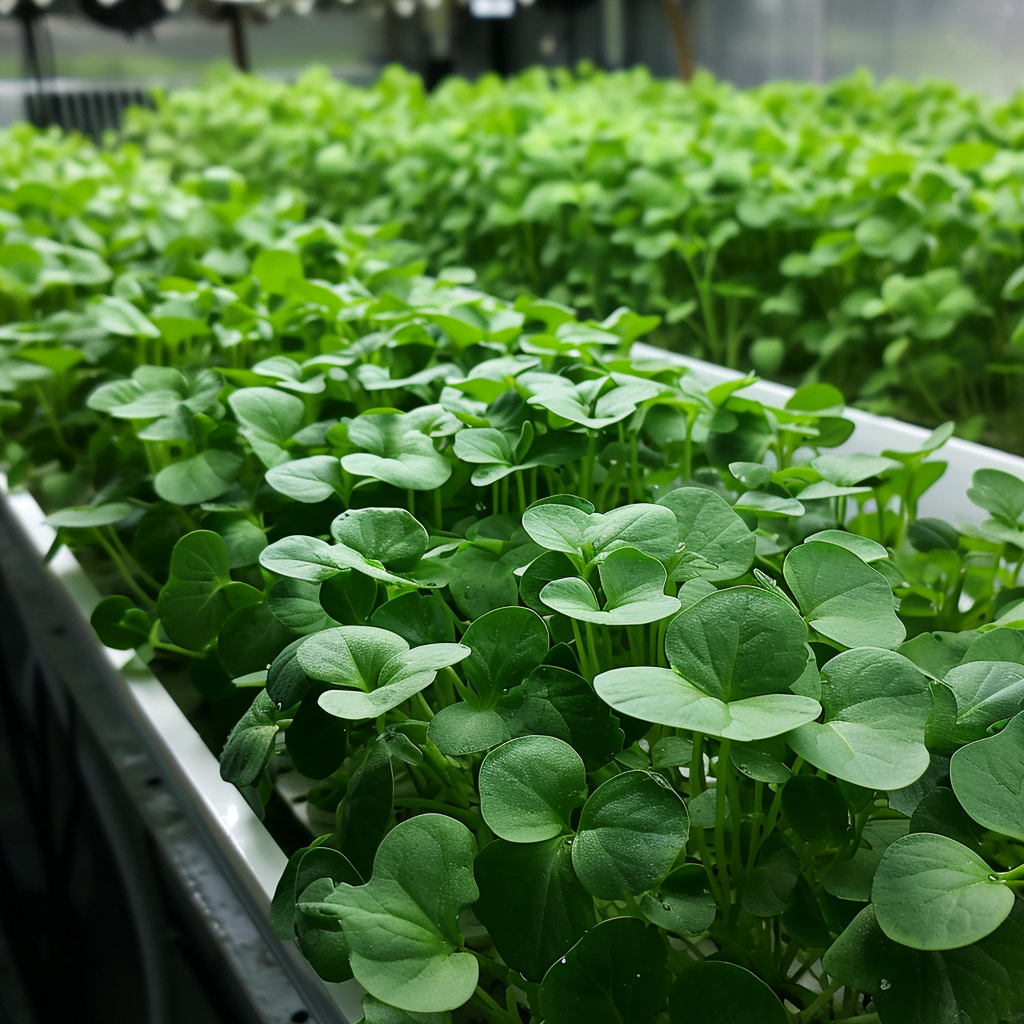Hydroponic gardening has been growing in popularity as a way to efficiently grow herbs, vegetables, and other plants indoors or in greenhouses using nutrient-rich water instead of soil. One commonly available hydroponically grown plant is basil – those fresh, green starter plants you often see for sale at the grocery store. But Can I Plant Hydroponically Grown Basil, and can you actually take those starter plants home and grow them yourself without fancy hydroponic equipment?
The answer is yes – with the right conditions and care, hydroponically grown basil can be successfully planted and grown at home using a semi-hydroponic approach. This article will provide a complete guide to planting hydroponic basil starters in your own garden or containers.
What is Hydroponically Grown Basil?
Hydroponic basil is simply basil that has been grown in a soilless, aquatic-based environment using added nutrients in the water for growth rather than getting those nutrients from soil.
Some key characteristics of hydroponically grown basil:
- Grows faster and yields more than soil grown plants in the same time frame
- Clean and free of soil or pest residues
- Consistent quality and flavor year-round
- Widely available at most major grocery retailers
- Roots are exposed rather than surrounded by soil
By precisely controlling the nutrients, water, lighting, and environmental conditions, hydroponic gardening allows basil and other plants to grow rapidly and efficiently. This makes it convenient for commercial-scale production and puts hydroponic basil within reach of the everyday gardener.
Is it Possible to Plant Hydroponically Grown Basil?
The good news is that the basil itself is genetically no different than traditionally soil grown varieties. So with the right hydroponic-like conditions at home, these starter plants can certainly flourish.
While fully replicating commercial hydroponic systems can be complex, it is possible to provide basil starters with a quasi-hydroponic environment using easily available materials. This allows anyone to enjoy homegrown hydroponic basil.
Here are a few examples and evidence that it can be done successfully:
- University studies have tested growing hydroponic basil in different home hydroponic systems with positive results.
- There are many YouTube videos and firsthand accounts documenting the process.
- Special “self-watering” planters are available that create hydroponic-like conditions for transplanted basil.
- Following the steps below will set your hydroponic basil up for success.
So the answer is definitively yes – with a little effort you can create appropriate conditions for thriving hydroponic basil at home.
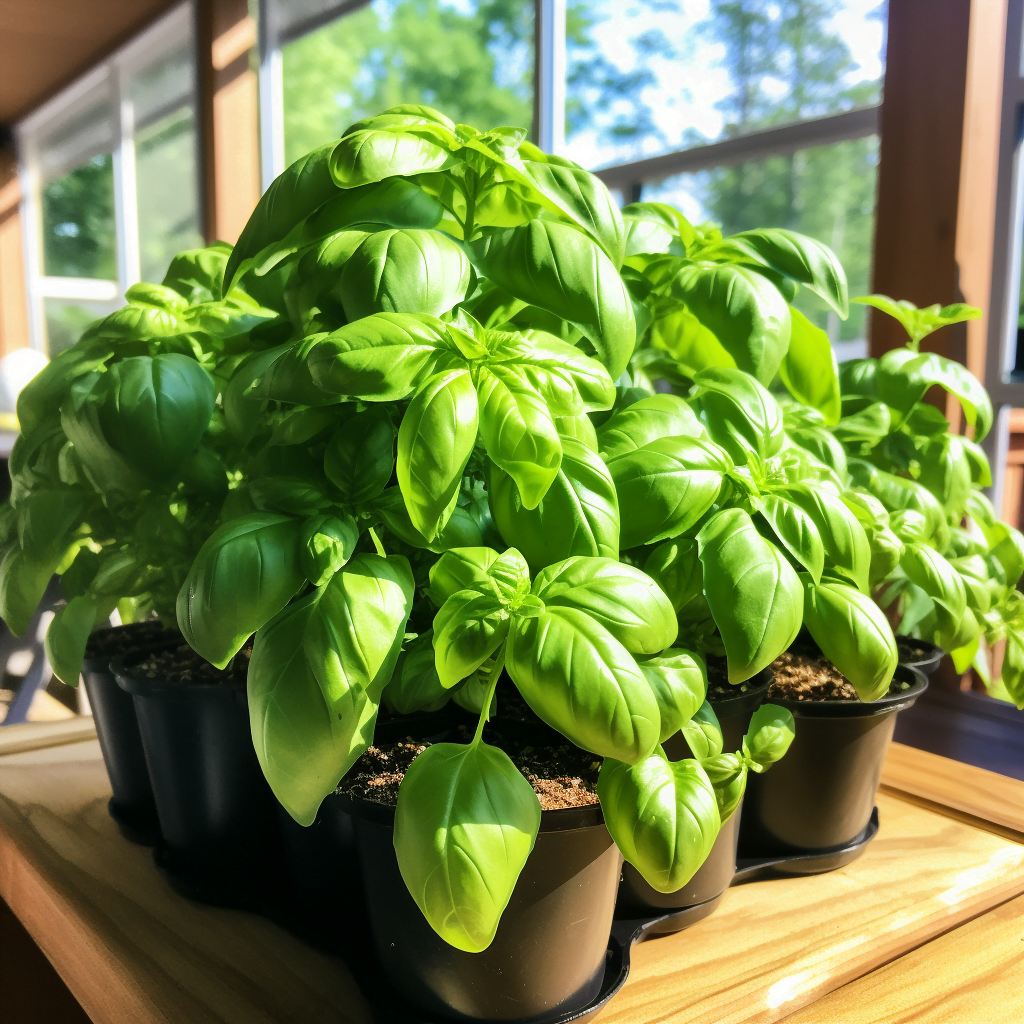
Step-by-Step Guide to Planting Hydroponic Basil
Planting hydroponic basil starters is not complicated, but doing it right does involve following some specific steps and considerations.
Select the Healthiest Starter Plants
- Inspect plants carefully at the store and select ones with robust, green leaves and healthy white root systems. Avoid any with signs of wilt or yellowing.
- Larger, more established plants are preferable to smaller starters.
- Basil sold in soil pots can work but may involve more transplant shock.
Choose the Right Hydroponic Growing Medium
Since hydroponic plants get their nutrients from the water, they can grow in lightweight, non-soil media that just provides physical support and anchors the roots. Popular options:
- Perlite
- Vermiculite
- Coconut coir
- Clay pellets
- Rockwool
Avoid actual potting soil, as it will clog hydroponic systems. A blend of perlite and vermiculite tends to work well for home hydroponic basil.
Create the Proper Nutrient Solution
The key to ongoing success is the hydroponic nutrient solution that provides all the elements basil needs:
- Most essential nutrients: nitrogen, phosphorous, potassium (NPK)
- Secondary nutrients: calcium, magnesium, sulfur
- Micronutrients: iron, manganese, boron, zinc, copper, molybdenum, chlorine
Specialized hydroponic nutrient blends are available, or a diluted all-purpose fertilizer can work. Maintain pH between 5.5-6.5.
Follow Optimal Hydroponic Conditions
Replicate commercial hydroponic growing environments as closely as possible:
- Watering: Roots should be continuously submerged in nutrient solution. Ebb and flow systems work well.
- Lighting: Basil needs 12-16 hours of bright light daily. Supplement with grow lights.
- Temperature: Ideal temps are 70-80°F during the day and 60-70°F at night.
- Humidity: 40-60% humidity is recommended.
Transplanting Considerations
- Gently remove starter plug without damaging roots before transplanting into growing medium.
- Bury most of stem, leaving just top leaves exposed.
- Start in small container, then transplant to larger pot or garden as it grows.
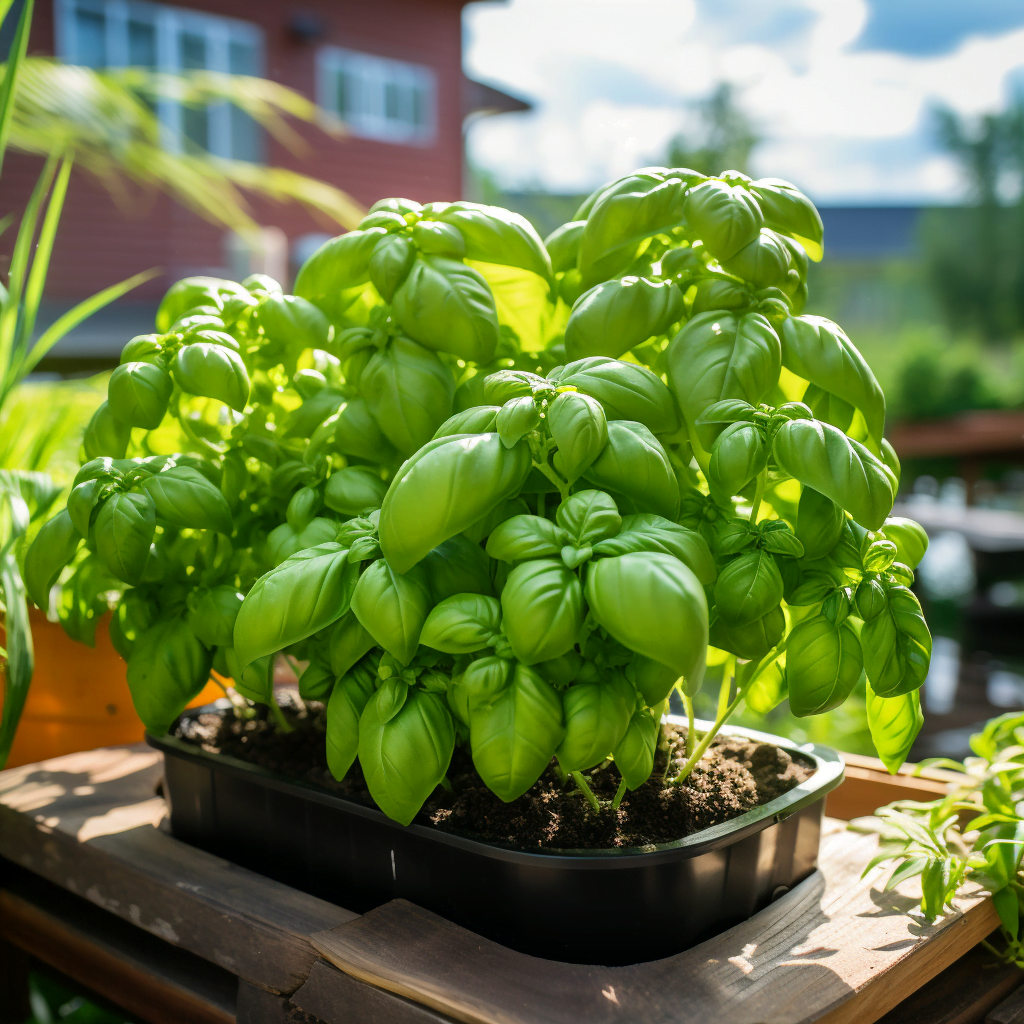
Tips and Tricks for Success
Follow these tips to ensure your hydroponic basil transplants thrive:
- Start more plants than needed in case of any transplant loss.
- Be diligent about measuring nutrients and adjusting pH in solution.
- Maintain consistent moisture, temperatures, and lighting conditions.
- Prune frequently to encourage bushy growth.
- Practice good sanitation to prevent disease.
- Harvest often by pinching off tops and new growth.
Common Issues and Solutions
If your basil plants show signs of stress or poor health, here are some likely causes and fixes:
Slow growth: Add more nitrogen to nutrient solution or provide more light.
Yellowing leaves: Potential nutrient deficiency or pH imbalance. Test and modify nutrient solution.
Root rot: Overwatering. Allow more time between waterings.
Fungal issues: Improve air circulation and reduce humidity.
Pests: Treat for common offenders like aphids, whiteflies, or fungus gnats.
With attention to providing the right hydroponic-style environment, it is certainly possible for home gardeners to successfully plant and grow grocery store hydroponic basil starter plants! Follow this guide and you’ll be harvesting an abundance of fresh, flavorful basil from your indoor or outdoor hydroponic garden in no time.
Conclusion: Enjoy Your Own Homegrown Hydroponic Basil
Growing hydroponically cultivated basil starters in your own home or garden is an achievable and rewarding endeavor for any gardener. With the right materials and a little effort to replicate hydroponic conditions, you can transfer those store-bought plants into thriving, productive additions to your indoor or outdoor living space.
The keys covered in this guide include selecting robust starter plants, choosing an appropriate hydroponic medium, mixing the proper nutrient solution, maintaining optimal environmental factors, attentive planting and care, and troubleshooting any issues that arise.
While it does require monitoring and work to provide basil a pseudo-hydroponic environment, the benefits are well worth it. You’ll enjoy months of abundant fresh basil harvests to use in your favorite recipes and dishes. And you’ll have the satisfaction and convenience of homegrown flavor right on hand.
With this complete step-by-step reference for planting hydroponic basil, you now have all the information you need to successfully grow these versatile plants at home. So don’t hesitate – head to the store, pick up some healthy starters, and soon you’ll be enjoying your own steady supply of hydroponically grown basil!
